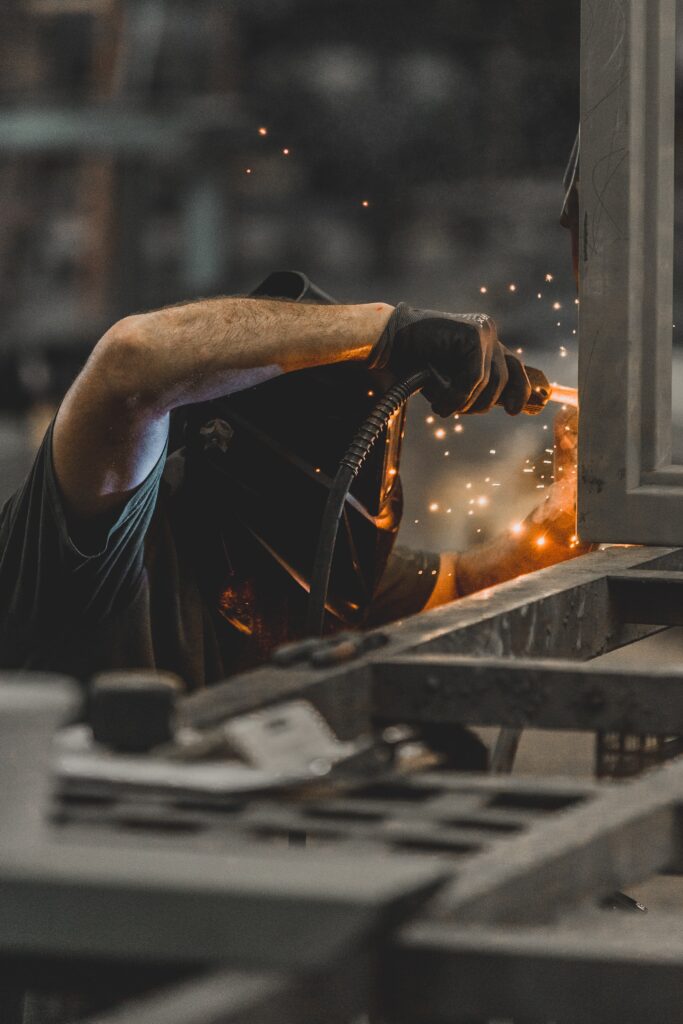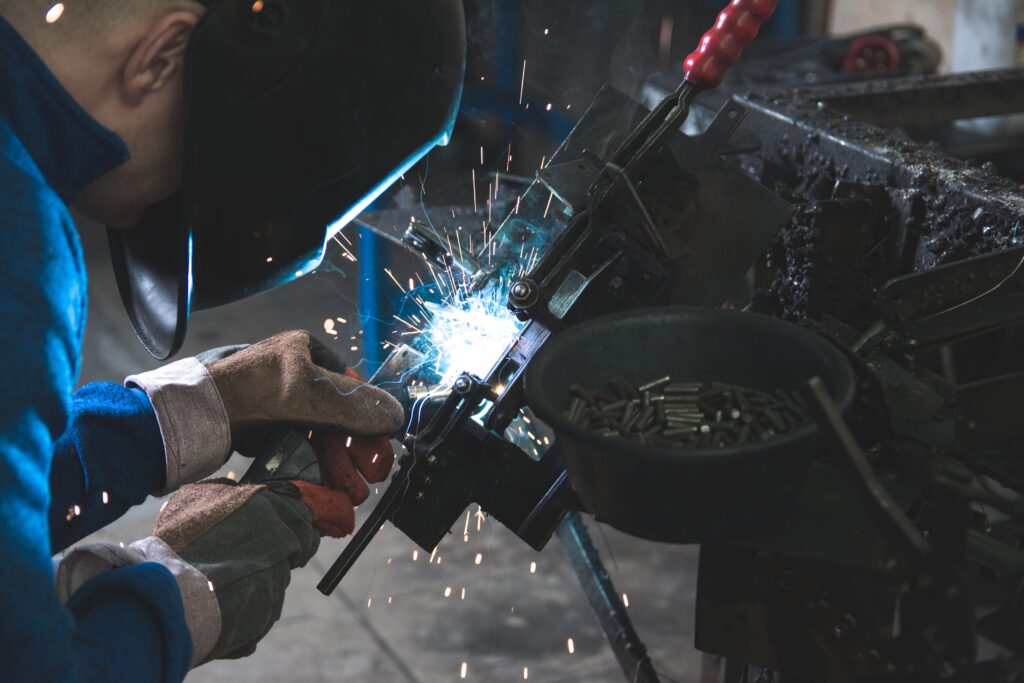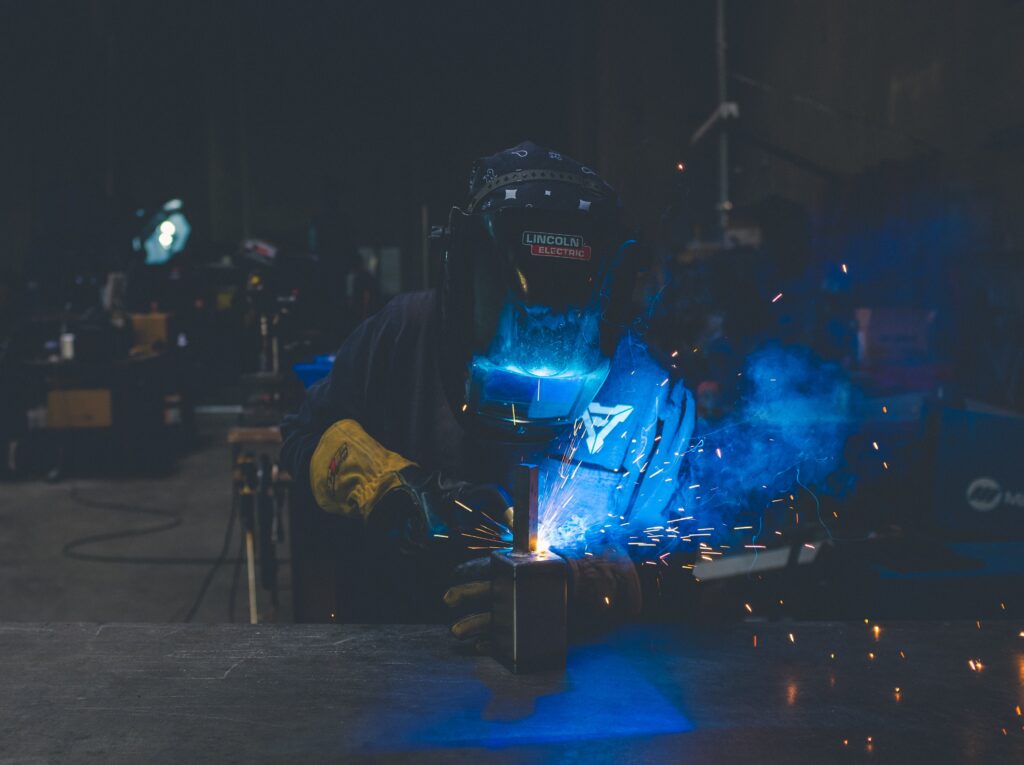You’re on a journey to the world of welding – a field you might be considering for your career path. The article “Is Welding A Very Physical Job?” works to answer just that. It examines the physical demands of welding, helping you to better understand whether the rigors of this craft are suitable for your lifestyle and health. Prepare to get an in-depth view of the physicality of welding – from the equipment used to safety measures one must adopt. Your understanding of this profession will be enriched by the end, ensuring you’re making an informed career choice.

Understanding the Nature of Welding
It’s understandable that you might wonder, “Is welding a very physical job?” Well, the short answer is yes. However, welding is also a fascinating discipline that requires a combination of strength, dexterity, and know-how.
What does welding involve?
Welding is a process that involves using heat to fuse together pieces of metal or thermoplastics. It demands an understanding of different metals, heat values, and the best techniques to achieve strong, durable joints. welding involves not just physical strength, but also an analytical mind to troubleshoot and solve problems.
Different types of welding techniques
There are many different welding techniques out there, including stick, MIG, TIG, and flux-cored arc welding. Each requires its specific skillset, and choosing the one to specialize in is a crucial decision that can affect the nature of your work.
Welding as a professional career
As a professional career, welding offers a wide range of opportunities in industries such as construction, shipbuilding, and automotive manufacturing, among others. It’s a job that provides satisfaction in seeing the tangible results of your efforts.
Demanding Physical Aspects of Welding
There’s no way around it; welding is physically demanding. It requires strength, dexterity, and endurance.
Requirements for physical strength
Welding often involves handling heavy tools and materials. Good physical strength is essential for endurance and for preventing injuries.
Need for manual dexterity and hand-eye coordination
Accurate welding requires excellent hand-eye coordination and manual dexterity. You’ll need the ability to control the tools accurately while paying attention to the minor details.
Effect of repetitiveness on the body
The repetitiveness of welding can take a toll on your body, potentially leading to strains and overuse injuries if you’re not careful. Regular rest and physical exercises can help mitigate these effects.

Welding and its Impact on Overall Health
Welding can indeed have a significant impact on overall health if proper measures are not taken.
Physical stress on the body due to welding
Welding can certainly be a source of physical stress on the body. Standing or sitting in uncomfortable positions and performing repetitive motions can lead to chronic pains and strains.
Possible injuries and bodily harm in welding
Welding comes with a risk of burns, eye damage, and injuries from falling or flying objects. It’s important to use protective equipment and follow safety measures to minimize these risks.
Long-term health effects of welding
Long-term health effects of welding can include respiratory issues due to exposure to welding fumes and vision problems from prolonged exposure to intense light. Hearing loss is also a risk due to exposure to high noise levels.
Skills required in Welding Work
Welding is not just about hands-on work. It also requires a significant amount of knowledge and skill.
Understanding blueprints and schematics
To create strong and precise welds, knowing how to read and interpret blueprints and schematics is crucial. It’s essential for understanding the design and identifying the precise locations and specifications for the welds.
Precision and attention to detail
Every successful weld depends on precision and attention to detail. Messy or weak welds can compromise the entire structure, so a good welder needs to be meticulous and focused.
Maintenance and usage of welding tools
Knowing how to maintain and use welding tools properly is essential. It helps prolong the lifespan of the equipment, improves efficiency, and prevents potential accidents and injuries.

Environment Conditions in Welding
The working conditions in welding can be challenging, but understanding them can help you prepare better.
Working conditions for welders
Working conditions for welders can vary from indoor workshops to outdoor construction sites. Welders may have to work in hot or cold conditions, and occasionally in confined spaces.
Exposure to heat and fumes
There’s exposure to heat and sometimes toxic fumes in welding. Proper preventive measures, good ventilation, and the use of appropriate protective gear are essential.
Potential hazards in a welding environment
In a welding environment, potential hazards can include electric shocks, fires, burns, and eye damage. Awareness of the risks and following safety procedures can help minimize these hazards.
Practices to Promote Physical Fitness in Welding
Promoting physical health and wellness in welding is fundamental to prevent injuries and improve productivity.
Promoting physical health and wellness
Maintaining overall health and wellness is critical for every welder. Regular medical check-ups, staying active, and following a balanced diet can contribute to this.
Exercises for strengthening the body for welding
Specific exercises can strengthen the muscles used in welding and enhance endurance. Stretching exercises can also help maintain flexibility and prevent strains.
Importance of breaks and rest periods
Taking regular breaks can help your body recover and also prevent fatigue. Getting a good night’s sleep is equally important for your body to recuperate after a long day of welding.
Welding Equipment and Its Ergonomics
Understanding the ergonomics of welding equipment can contribute significantly to comfort and efficiency in your work.
Physical aspects of handling welding equipment
Handling welding equipment can be a physically taxing job, especially when heavy or awkwardly positioned. Good posture and lifting techniques can help prevent musculoskeletal problems.
Ergonomics of welding tools
The design of welding tools has improved with an emphasis on ergonomics. These tool designs minimize user discomfort and increase productivity by fitting well in the hand, and reducing fatigue and discomfort.
Weight and maneuverability of welding devices
The weight and maneuverability of welding devices significantly impact comfort and fatigue. Choosing tools that suit your physical abilities can make a big difference in your overall comfort, effectiveness, and career longevity.
Safety Measures in Welding Profession
Safety is a paramount concern in the welding profession.
Personal Protective Equipment (PPE) for welders
Using appropriate Personal Protective Equipment (PPE) is essential in protecting yourself from various risks. This includes safety goggles, welding helmets, safety shoes, and protective clothing.
Safety procedures to avoid physical harm
Following safety procedures can greatly reduce the risk of physical harm. This includes using proper welding techniques, checking equipment before use, and maintaining a clean and safe work environment.
Training and education on welding safety
Regular training and education on welding safety are crucial as they keep you updated on the latest safety procedures and equipment. They also instill a culture of safety, which is vital in high-risk professions like welding.
Impact of Welding Positions on Physicality
The way you position yourself can significantly affect your physical experience of welding.
Different welding positions
There are various welding positions, including standing up, sitting down, or lying down. Some positions require working overhead or in confined spaces. Each of them has its unique challenges and stresses on the body.
How welding positions affect the body
Welding positions can determine the strains and stresses that are placed on your body. Overhead welding can be particularly straining on the shoulder and neck muscles. In contrast, welding in a seated position for long periods can result in lower back discomfort.
Physical strain based on welding positions
The strain on your body can differ depending on the welding position. Managing your body wisely and incorporating resting periods can help counteract the physical stress and prevent potential injuries.
Counteracting the Physical Stress of Welding
Despite the physical demands of the job, there are ways to counteract the physical stress of welding.
Professional healthcare for welders
Professional healthcare, including regular medical check-ups and timely interventions when issues arise, is crucial for a long, healthy welding career.
Stretches and exercises to counteract physical stress
Engaging in stretches and exercises specifically designed to ease the physical strains associated with welding can be beneficial. This routine can help keep muscles flexible and strong.
Role of diet and lifestyle in managing physical stress
A healthy diet rich in essential nutrients can give your body the energy it needs to withstand the physical demands of welding. Also, habits like avoiding excessive alcohol, quitting smoking and getting enough sleep are key facets of a healthy lifestyle for a welder.
In conclusion, yes, welding is indeed a very physical job. But by understanding the profession, staying fit, practicing safety measures, and taking good care of your health, you’ll be able to handle the challenges and enjoy a rewarding career.
